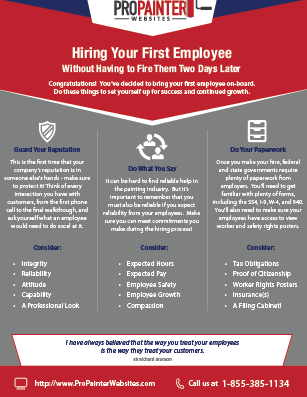Discover How Seasonal Influences Can Influence The Efficiency Of Commercial External Painting And Learn The Most Beneficial Times To Guarantee Resilient Results For Your Task
Discover How Seasonal Influences Can Influence The Efficiency Of Commercial External Painting And Learn The Most Beneficial Times To Guarantee Resilient Results For Your Task
Blog Article
Produced By-McLamb Skafte
When you're planning a commercial outside paint job, seasonal elements can make or break your outcomes. You'll wish to think about how temperature and humidity impact paint application and drying out times. Choosing the right period can ensure your paint sticks appropriately and lasts longer. Yet which seasons are truly the best for this kind of work? Allow's explore the crucial elements that can affect your job's success.
The Impact of Temperature Level on Paint Application
When you're preparing an industrial external paint task, the temperature can dramatically impact exactly how well the paint sticks and dries out.
Ideally, you intend to repaint when temperature levels range between 50 ° F and 85 ° F. If it's as well cold, the paint may not cure correctly, leading to problems like peeling off or cracking.
On the flip side, if it's too hot, the paint can dry out as well swiftly, avoiding appropriate bond and resulting in an irregular surface.
You need to likewise consider the time of day; morning or late afternoon offers cooler temperatures, which can be extra beneficial.
Constantly check the maker's recommendations for the certain paint you're using, as they often provide advice on the excellent temperature array for optimal results.
Moisture and Its Result on Drying Times
Temperature isn't the only environmental factor that influences your business outside paint job; moisture plays a substantial function too. High moisture degrees can decrease drying times dramatically, influencing the overall top quality of your paint job.
When the air is filled with moisture, the paint takes longer to treat, which can cause issues like bad attachment and a higher risk of mold growth. If you're repainting on a particularly humid day, be prepared for extensive wait times in between layers.
It's important to monitor local climate condition and plan accordingly. Ideally, go for humidity degrees between 40% and 70% for optimum drying out.
Keeping these factors in mind ensures your job stays on track and provides a long-term coating.
Best Seasons for Commercial Exterior Paint Projects
What's the most effective time of year for your industrial outside paint jobs?
you could try this out and early loss are normally your best options. During linked internet page , temperature levels are mild, and humidity degrees are often lower, producing suitable problems for paint application and drying.
Avoid summer season's intense heat, which can trigger paint to dry as well quickly, resulting in bad adhesion and coating. In a similar way, winter season's cool temperature levels can hinder proper drying and curing, risking the durability of your paint work.
Go for days with temperatures between 50 ° F and 85 ° F for ideal outcomes. Keep in mind to check the local weather report for rainfall, as wet problems can wreck your job.
Planning around these elements guarantees your paint project runs smoothly and lasts longer.
Conclusion
In conclusion, planning your industrial exterior paint tasks around seasonal factors to consider can make a significant distinction in the outcome. By scheduling work during the optimal temperature levels and moisture levels, you'll guarantee much better adhesion and drying out times. Keep in mind to keep an eye on local weather forecasts and choose the right time of year-- springtime and early autumn are your best choices. Taking these actions will certainly help you accomplish a durable and professional surface that lasts.
